START HERE » TCR Chain Finder
Select Size10-16.5 10-16.5 SkidSteer 10-17.5 10-22.5 10.00-15 10.00-15TR 10.00-16.5 10.00-20 10.00-22 10.25x3.25 10.5/80-18 10/10.5x2.75 10x3.50 11-17.5 11-22.5 11-24.5 11.00-15 11.00-15TR 11.00-16 11.00-20 11.00-22 11.2-16 11.2-20 11.2-24 11.2-28 11.2-32 11.2-34 11.2-36 11.2-38 11.2-44 11L-16 12-22.5 12-24.5 12.00-15 12.00-16.5 12.00-16.5 Skidsteer 12.00-20 12.00-24 12.25x3.50x6 12.4-16 12.4-20 12.4-24 12.4-28 12.4-36 12.4-38 12.4-40 12.4-42 12.5-20 12.5-22.5 12.5/80-18 12x12 12x3 12x3.50x6 13.00-24 13.00-25 13.50-16.1 13.6-16 13.6-24 13.6-26 13.6-28 13.6-36 13.6-38 13.9-36 13/80-20 13x4.00-6 13x5x6 13x6.50-6 14-17.5 14-17.5 Skidsteer 14.00-20 14.00-21 14.00-24 14.00-25 14.9-24 14.9-26 14.9-28 14. 5 225/70-19.5 225/70-22.5 225/75-14 225/75-15 225/75-16 225/75-17 22x10-12 22x10-8 22x10x10 22x10x9 22x11.00-8 22x11x10 22x11x8 22x11x9 22x12-8 22x8x11 22x9.00-8 22x9.50-12 23.1-26 23.1-30 23.1-34 23.5-25 23.5x8-11 235/35-19 235/45-17 235/50-17 235/50-18 235/55-16 235/55-17 235/60-15 235/60-17 235/60-18 235/65-17 235/65-18 235/70-14 235/70-15 235/70-16 235/70-17 235/75-15 235/75-16 235/75-17 235/75-17.5 235/80-16 235/80-17 235/80-22.5 235/85-16 23x10-12 23x10.50-12 23x10x10 23x11-10 23x7.50x12 23x8-10 23x8-11 23x8.50-12 23x8.50-14 23x9.50x12 24.5-32 240/45-15 245/35-20 245/40-17 245/40-18 245/45-16 245/45-17 245/50-15 245/50-16 245/50-17 245/55-16 245/55-17 245/60-14 245/65-15 245/65-17 245/70-15 245/70-16 245/70-17 245/70-17.5 245/70-19.5 245/75-15 245/75-16 245/75-17 245/75-22.5 245/85-16 24x10.50-12 24x10x11 24x11-11 24x11.00-12 24x11.5x10 24x11x10 24x11x8 24x11x9 24x12-10 24x12-12 24x13x12 24x13x9 24x8-11 24x8.00-12 24x8.00-14 24x8.50-12 24x8.50-14 24x9.50-12 24x9x11 24x9x12 250-15 255/40-17 255/40-18 255/45-15 255/45-18 255/55-14 255/55-17 255/55-18 255/60-14 255/60-17 255/60-18 255/65-15 255/65-16 255/65-17 255/70-15 255/70-16 255/70-17 255/70-18 255/70-22. 5 225/70-19.5 225/70-22.5 225/75-14 225/75-15 225/75-16 225/75-17 22x10-12 22x10-8 22x10x10 22x10x9 22x11.00-8 22x11x10 22x11x8 22x11x9 22x12-8 22x8x11 22x9.00-8 22x9.50-12 23.1-26 23.1-30 23.1-34 23.5-25 23.5x8-11 235/35-19 235/45-17 235/50-17 235/50-18 235/55-16 235/55-17 235/60-15 235/60-17 235/60-18 235/65-17 235/65-18 235/70-14 235/70-15 235/70-16 235/70-17 235/75-15 235/75-16 235/75-17 235/75-17.5 235/80-16 235/80-17 235/80-22.5 235/85-16 23x10-12 23x10.50-12 23x10x10 23x11-10 23x7.50x12 23x8-10 23x8-11 23x8.50-12 23x8.50-14 23x9.50x12 24.5-32 240/45-15 245/35-20 245/40-17 245/40-18 245/45-16 245/45-17 245/50-15 245/50-16 245/50-17 245/55-16 245/55-17 245/60-14 245/65-15 245/65-17 245/70-15 245/70-16 245/70-17 245/70-17.5 245/70-19.5 245/75-15 245/75-16 245/75-17 245/75-22.5 245/85-16 24x10.50-12 24x10x11 24x11-11 24x11.00-12 24x11.5x10 24x11x10 24x11x8 24x11x9 24x12-10 24x12-12 24x13x12 24x13x9 24x8-11 24x8.00-12 24x8.00-14 24x8.50-12 24x8.50-14 24x9.50-12 24x9x11 24x9x12 250-15 255/40-17 255/40-18 255/45-15 255/45-18 255/55-14 255/55-17 255/55-18 255/60-14 255/60-17 255/60-18 255/65-15 255/65-16 255/65-17 255/70-15 255/70-16 255/70-17 255/70-18 255/70-22.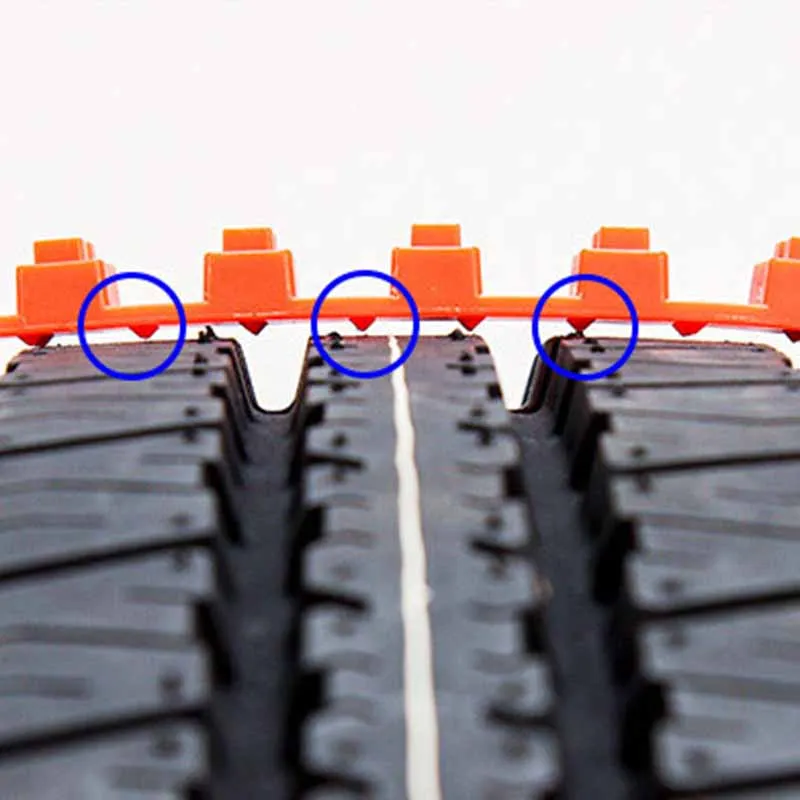 5 255/75-15 255/75-16 255/75-17 255/80-22.5 255/85-16 25x10-8 25x10x10 25x10x12 25x11x10 25x11x12 25x11x8 25x12x10 25x12x9 25x13-9 25x13.50-9 25x13.5x12 25x7.50-15 25x8-10 25x8-11 25x8.50-14 25x8x12 26.5-25 26.5-29 265/50-16 265/50-20 265/60-16 265/60-18 265/65-17 265/70-15 265/70-16 265/70-17 265/70-18 265/70-19.5 265/75-15 265/75-16 265/75-22.5 265/80-16 26x10-12 26x10-14 26x10.5x12 26x11-12 26x11-14 26x12-14 26x12.00-12 26x8-12 26x9-12 26x9-14 26x9.5-12 270/60-12 270/95-36 275/45-20 275/55-17 275/55-18 275/55-20 275/60-15 275/60-16 275/60-17 275/60-18 275/60-20 275/60HR17 275/65-16 275/65-17 275/65-18 275/70-16 275/70-17 275/70-18 275/70-22.5 275/80-22.5 275/80-24.5 27x10-14 27x10.50-15 27x10x12 27x11-12 27x11-14 27x12-14 27x12x12 27x8.50-14 27x8.50-15 27x9-12 27x9-14 27x9.50-15 28-Dec 28-Nov 280/85-24 285/40-15 285/45-19 285/50-20 285/60-16 285/60-17 285/60-18 285/65-17 285/65-18 285/70-16 285/70-17 285/70-19.5 285/75-16 285/75-24.5 28L-26 28l26 28x10-14 28x12-15 28x8.50x14 28x9-14 28x9-15 29.
5 255/75-15 255/75-16 255/75-17 255/80-22.5 255/85-16 25x10-8 25x10x10 25x10x12 25x11x10 25x11x12 25x11x8 25x12x10 25x12x9 25x13-9 25x13.50-9 25x13.5x12 25x7.50-15 25x8-10 25x8-11 25x8.50-14 25x8x12 26.5-25 26.5-29 265/50-16 265/50-20 265/60-16 265/60-18 265/65-17 265/70-15 265/70-16 265/70-17 265/70-18 265/70-19.5 265/75-15 265/75-16 265/75-22.5 265/80-16 26x10-12 26x10-14 26x10.5x12 26x11-12 26x11-14 26x12-14 26x12.00-12 26x8-12 26x9-12 26x9-14 26x9.5-12 270/60-12 270/95-36 275/45-20 275/55-17 275/55-18 275/55-20 275/60-15 275/60-16 275/60-17 275/60-18 275/60-20 275/60HR17 275/65-16 275/65-17 275/65-18 275/70-16 275/70-17 275/70-18 275/70-22.5 275/80-22.5 275/80-24.5 27x10-14 27x10.50-15 27x10x12 27x11-12 27x11-14 27x12-14 27x12x12 27x8.50-14 27x8.50-15 27x9-12 27x9-14 27x9.50-15 28-Dec 28-Nov 280/85-24 285/40-15 285/45-19 285/50-20 285/60-16 285/60-17 285/60-18 285/65-17 285/65-18 285/70-16 285/70-17 285/70-19.5 285/75-16 285/75-24.5 28L-26 28l26 28x10-14 28x12-15 28x8.50x14 28x9-14 28x9-15 29.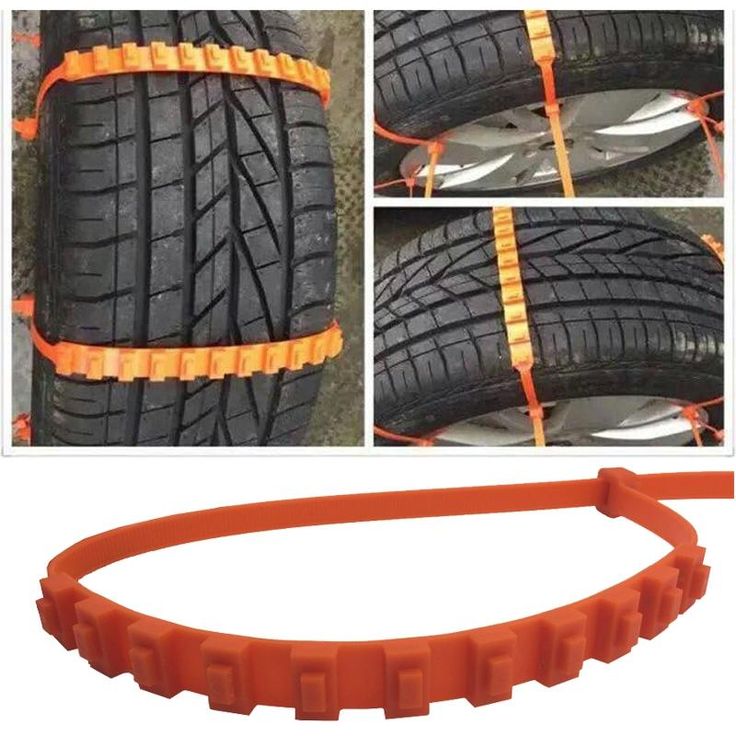 5-25 29.5-29 290/95-34 295/45-20 295/50-16 295/70-17 295/70-22.5 295/75-16 295/75-22.5 295/75-24.5 295/80-22.5 29x11-14 29x12-15 29x12.50-15 29x8-15 29x9-14 29x9.50-15 3.40/3.00X5 30.5L-32 300/70-20 300/80-24 305/45-17 305/50-15 305/50-20 305/55-20 305/60-18 305/70-16 305/70-17 305/70-22.5 305/75-24.5 305/85-16 305/85-22.5 30x10-14 30x9.50-15 30x9.50-16 315/45-22.5 315/70-15 315/70-17 315/70-22.5 315/75-15 315/75-16 315/75-22.5 315/75-24.5 315/80-22.5 31x10.50-15 31x10.50-16.5 31x11.50-15 31x11.50-16 31x12.50-16 31x13.5-15 31x15.50-15 320/70-20 320/70-24 320/80-18 320/85-24 320/85-34 320/90-46 325/60-15 325/60-18 325/60-20 325/65-18 325/80-16 32x10-16 32x11.50-15 32x11.50-16 32x12.50-15 32x12.50-16.5 32x9-16 33x10.50x15 33x12.50-15 33x12.50-16.5 33x13.50-15 33x13.50-16 33x14.50-15 33x14x15 33x15.5-16.5 33x9.50-15 340/80-18 340/85-24 340/85-28 345/55-16 345/55-17 34x9.50-15 34x9x16 35.5-32 355/60-20 355/65-18 355/80-20 35x12.5-16 35x12.50-15 35x12.50-16.5 35x12.50-17 35x12.50-20 35x13.50-15 35x13. 5-25 29.5-29 290/95-34 295/45-20 295/50-16 295/70-17 295/70-22.5 295/75-16 295/75-22.5 295/75-24.5 295/80-22.5 29x11-14 29x12-15 29x12.50-15 29x8-15 29x9-14 29x9.50-15 3.40/3.00X5 30.5L-32 300/70-20 300/80-24 305/45-17 305/50-15 305/50-20 305/55-20 305/60-18 305/70-16 305/70-17 305/70-22.5 305/75-24.5 305/85-16 305/85-22.5 30x10-14 30x9.50-15 30x9.50-16 315/45-22.5 315/70-15 315/70-17 315/70-22.5 315/75-15 315/75-16 315/75-22.5 315/75-24.5 315/80-22.5 31x10.50-15 31x10.50-16.5 31x11.50-15 31x11.50-16 31x12.50-16 31x13.5-15 31x15.50-15 320/70-20 320/70-24 320/80-18 320/85-24 320/85-34 320/90-46 325/60-15 325/60-18 325/60-20 325/65-18 325/80-16 32x10-16 32x11.50-15 32x11.50-16 32x12.50-15 32x12.50-16.5 32x9-16 33x10.50x15 33x12.50-15 33x12.50-16.5 33x13.50-15 33x13.50-16 33x14.50-15 33x14x15 33x15.5-16.5 33x9.50-15 340/80-18 340/85-24 340/85-28 345/55-16 345/55-17 34x9.50-15 34x9x16 35.5-32 355/60-20 355/65-18 355/80-20 35x12.5-16 35x12.50-15 35x12.50-16.5 35x12.50-17 35x12.50-20 35x13.50-15 35x13.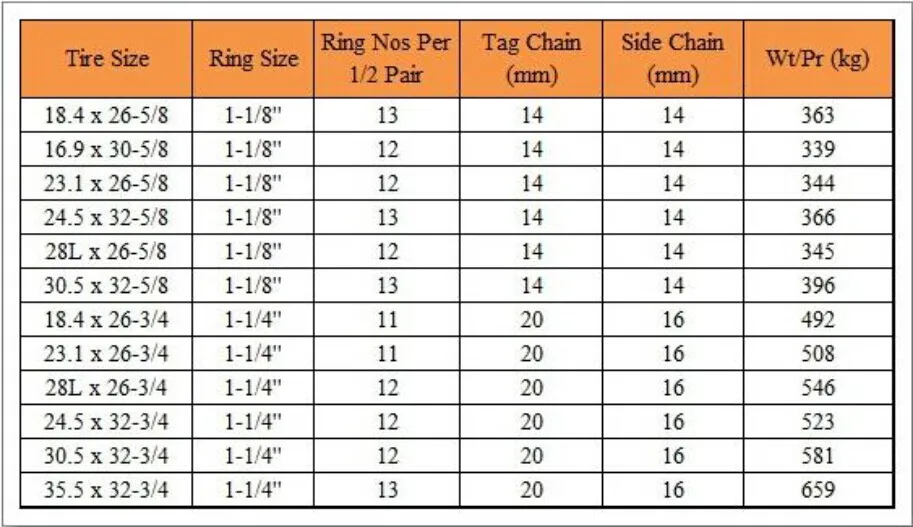 50-16 35x14-15 35x14-16 360/70-24 360/80-20 365/60-22.5 365/65-16 36x12.50-15 36x12.50-16.5 36x13x16 36x14-16.5 37x12.50-16.5 37x12.50-17 37x12.50-20 37x12.50x16 37x13.50-17 37x13.50-20 38.5x15-16.5 380/70-24 380/85-24 380/85-28 380/85-30 385/95R24 38x12.50x16.50 38x13x16 38x15.50R16.5 395/85-20 4.00x4.80x8 4.10/3.50x4 4.10/3.50x5 4.10/3.50x6 4.10x3.50x6 400/70-20 400/80-24 400/80-28 405/70-20 40x19-19.5 41x14.00-20 420/70-24 420/70-28 420/70-30 420/80-46 420/85-24 420/90-30 425/65-22.5 43/16.00x20 440/65-24 440/65-28 440/80-24 440/80-28 440/80-30 440/80-34 445/65-19.5 445/65-22.5 445/70-24 44x18.00-20 455/55R22.5 460/65-24 465/65-24 480/65-24 480/65-28 480/70-24 480/80-30 5.00/5.70x8 5.30/4.50x6 550/65-25 555/70-25 6.00-14 6.00-16 6.50-10 6.50-16 6.50-20 6.70-15 600/50-22.5 600/55-26.5 600/65-34 6x12 7-17.5 7.00-12 7.00-14 7.00-15 7.00-15TR 7.00-16 7.00-17 7.00-18 7.00-20 7.2-24 7.50-10 7.50-14 7.50-15 7.50-15TR 7.50-16 7.50-17 7.50-18 7.50-20 700/45-22.5 700/50-26.5 700/50-34 700/55-34 700/70-34 705/70-25 710/45-26.
50-16 35x14-15 35x14-16 360/70-24 360/80-20 365/60-22.5 365/65-16 36x12.50-15 36x12.50-16.5 36x13x16 36x14-16.5 37x12.50-16.5 37x12.50-17 37x12.50-20 37x12.50x16 37x13.50-17 37x13.50-20 38.5x15-16.5 380/70-24 380/85-24 380/85-28 380/85-30 385/95R24 38x12.50x16.50 38x13x16 38x15.50R16.5 395/85-20 4.00x4.80x8 4.10/3.50x4 4.10/3.50x5 4.10/3.50x6 4.10x3.50x6 400/70-20 400/80-24 400/80-28 405/70-20 40x19-19.5 41x14.00-20 420/70-24 420/70-28 420/70-30 420/80-46 420/85-24 420/90-30 425/65-22.5 43/16.00x20 440/65-24 440/65-28 440/80-24 440/80-28 440/80-30 440/80-34 445/65-19.5 445/65-22.5 445/70-24 44x18.00-20 455/55R22.5 460/65-24 465/65-24 480/65-24 480/65-28 480/70-24 480/80-30 5.00/5.70x8 5.30/4.50x6 550/65-25 555/70-25 6.00-14 6.00-16 6.50-10 6.50-16 6.50-20 6.70-15 600/50-22.5 600/55-26.5 600/65-34 6x12 7-17.5 7.00-12 7.00-14 7.00-15 7.00-15TR 7.00-16 7.00-17 7.00-18 7.00-20 7.2-24 7.50-10 7.50-14 7.50-15 7.50-15TR 7.50-16 7.50-17 7.50-18 7.50-20 700/45-22.5 700/50-26.5 700/50-34 700/55-34 700/70-34 705/70-25 710/45-26. 5 710/55-34 73/44.00-32 750/55-26.5 750/65-25 755/70-25 8-17.5 8-19.5 8-22.5 8.00-16.5 8.15x15 8.25-15 8.25-15TR 8.25-20 8.3-24 8.50-17.5 8.75-16.5 8x12 8x15 8x16 9-14.5MH 9-17.5 9-22.5 9.00-15 9.00-15TR 9.00-16 9.00-20 9.5-16 9.5-24 9.5-28 9.5-32 9.5-36 9.5-38 9.50-16.5 FR78-15 GR78-15 H70-14ST H78-14ST H78-15 H78-15ST L78-16 LR78-15 LR78-16 Nov-36 Nov-38 NR78-15 Oct-32 Oct-38 PR78-15 PR78-16 QR78-15 QR78-16 Skidsteer
5 710/55-34 73/44.00-32 750/55-26.5 750/65-25 755/70-25 8-17.5 8-19.5 8-22.5 8.00-16.5 8.15x15 8.25-15 8.25-15TR 8.25-20 8.3-24 8.50-17.5 8.75-16.5 8x12 8x15 8x16 9-14.5MH 9-17.5 9-22.5 9.00-15 9.00-15TR 9.00-16 9.00-20 9.5-16 9.5-24 9.5-28 9.5-32 9.5-36 9.5-38 9.50-16.5 FR78-15 GR78-15 H70-14ST H78-14ST H78-15 H78-15ST L78-16 LR78-15 LR78-16 Nov-36 Nov-38 NR78-15 Oct-32 Oct-38 PR78-15 PR78-16 QR78-15 QR78-16 Skidsteer |
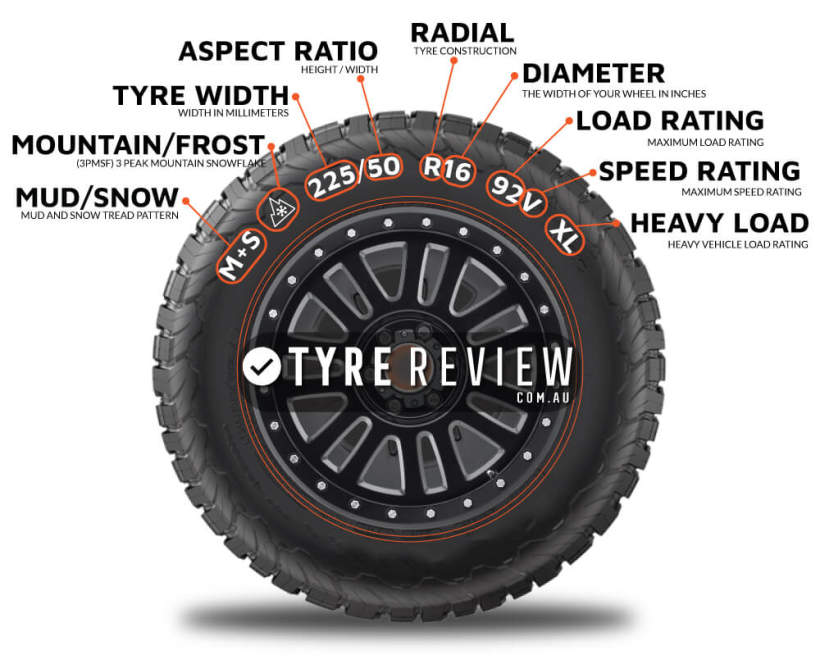 4-38 12.4-40 12.4-42 12.5-20 12.5-22.5 12.5/80-18 12x12 12x3 12x3.50x6 13.00-24 13.00-25 13.50-16.1 13.6-16 13.6-24 13.6-26 13.6-28 13.6-36 13.6-38 13.9-36 13/80-20 13x4.00-6 13x5x6 13x6.50-6 14-17.5 14-17.5 Skidsteer 14.00-20 14.00-21 14.00-24 14.00-25 14.9-24 14.9-26 14.9-28 14.9-30 14.9-38 14.9-46 14/80-20 14x4.00x6 14x4.50-6 15-19.5 15-22.5 15.5-25 15.5-38 15x5.00-6 15x6.00-6 16.00-20 16.00-21 16.00-24 16.00-25 16.5-22.5 16.9-24 16.9-26 16.9-28 16.9-30 16.9-32 16.9-34 16.9-38 16x4.80x8 16x4.8x8 16x6.50x8 16x7.50-8 17.5-24 17.5-25 17.5L-24 18.4-16.1 18.4-24 18.4-26 18.4-28 18.4-30 18.4-34 18.4-38 18.4-42 18.4-46 185-14 18x6.50x8 18x8.5-10 18x8.50x8 18x9.50x8 19.5L-24 195/75-14 195/75-15 20.5-25 20.8-34 20.8-38 205-15 205-16 205/50-17 205/60-17.5 205/65-16 205/70-16 205/75-14 205/75-16 205/80-12 205/80-14 205/80-15 20x10-9 20x10.00-10 20x10.00-8 20x10x8 20x8.00x10 20x8x8 20x9x8 21.5L-16.1 215-14 215/40-18 215/45-18 215/50-17 215/55-17 215/55-18 215/60-17 215/65-15 215/65-16 215/70-15 215/70-16 215/70-17.
4-38 12.4-40 12.4-42 12.5-20 12.5-22.5 12.5/80-18 12x12 12x3 12x3.50x6 13.00-24 13.00-25 13.50-16.1 13.6-16 13.6-24 13.6-26 13.6-28 13.6-36 13.6-38 13.9-36 13/80-20 13x4.00-6 13x5x6 13x6.50-6 14-17.5 14-17.5 Skidsteer 14.00-20 14.00-21 14.00-24 14.00-25 14.9-24 14.9-26 14.9-28 14.9-30 14.9-38 14.9-46 14/80-20 14x4.00x6 14x4.50-6 15-19.5 15-22.5 15.5-25 15.5-38 15x5.00-6 15x6.00-6 16.00-20 16.00-21 16.00-24 16.00-25 16.5-22.5 16.9-24 16.9-26 16.9-28 16.9-30 16.9-32 16.9-34 16.9-38 16x4.80x8 16x4.8x8 16x6.50x8 16x7.50-8 17.5-24 17.5-25 17.5L-24 18.4-16.1 18.4-24 18.4-26 18.4-28 18.4-30 18.4-34 18.4-38 18.4-42 18.4-46 185-14 18x6.50x8 18x8.5-10 18x8.50x8 18x9.50x8 19.5L-24 195/75-14 195/75-15 20.5-25 20.8-34 20.8-38 205-15 205-16 205/50-17 205/60-17.5 205/65-16 205/70-16 205/75-14 205/75-16 205/80-12 205/80-14 205/80-15 20x10-9 20x10.00-10 20x10.00-8 20x10x8 20x8.00x10 20x8x8 20x9x8 21.5L-16.1 215-14 215/40-18 215/45-18 215/50-17 215/55-17 215/55-18 215/60-17 215/65-15 215/65-16 215/70-15 215/70-16 215/70-17. 5 215/75-14 215/75-15 215/75-17.5 215/80-14 215/80-16 215/85-16 21L-24 21x11.00-8 22.5x10.00-8 220/60-16 220/65-390 225-14 225/35-20 225/40-18 225/45-18 225/45-19 225/55-16 225/55-17 225/55-17.5 225/55-18 225/60-16 225/60-17 225/65-15 225/65-16 225/65-18 225/70-14 225/70-15 225/70-16 225/70-17.5 225/70-19.5 225/70-22.5 225/75-14 225/75-15 225/75-16 225/75-17 22x10-12 22x10-8 22x10x10 22x10x9 22x11.00-8 22x11x10 22x11x8 22x11x9 22x12-8 22x8x11 22x9.00-8 22x9.50-12 23.1-26 23.1-30 23.1-34 23.5-25 23.5x8-11 235/35-19 235/45-17 235/50-17 235/50-18 235/55-16 235/55-17 235/60-15 235/60-17 235/60-18 235/65-17 235/65-18 235/70-14 235/70-15 235/70-16 235/70-17 235/75-15 235/75-16 235/75-17 235/75-17.5 235/80-16 235/80-17 235/80-22.5 235/85-16 23x10-12 23x10.50-12 23x10x10 23x11-10 23x7.50x12 23x8-10 23x8-11 23x8.50-12 23x8.50-14 23x9.50x12 24.5-32 240/45-15 245/35-20 245/40-17 245/40-18 245/45-16 245/45-17 245/50-15 245/50-16 245/50-17 245/55-16 245/55-17 245/60-14 245/65-15 245/65-17 245/70-15 245/70-16 245/70-17 245/70-17.
5 215/75-14 215/75-15 215/75-17.5 215/80-14 215/80-16 215/85-16 21L-24 21x11.00-8 22.5x10.00-8 220/60-16 220/65-390 225-14 225/35-20 225/40-18 225/45-18 225/45-19 225/55-16 225/55-17 225/55-17.5 225/55-18 225/60-16 225/60-17 225/65-15 225/65-16 225/65-18 225/70-14 225/70-15 225/70-16 225/70-17.5 225/70-19.5 225/70-22.5 225/75-14 225/75-15 225/75-16 225/75-17 22x10-12 22x10-8 22x10x10 22x10x9 22x11.00-8 22x11x10 22x11x8 22x11x9 22x12-8 22x8x11 22x9.00-8 22x9.50-12 23.1-26 23.1-30 23.1-34 23.5-25 23.5x8-11 235/35-19 235/45-17 235/50-17 235/50-18 235/55-16 235/55-17 235/60-15 235/60-17 235/60-18 235/65-17 235/65-18 235/70-14 235/70-15 235/70-16 235/70-17 235/75-15 235/75-16 235/75-17 235/75-17.5 235/80-16 235/80-17 235/80-22.5 235/85-16 23x10-12 23x10.50-12 23x10x10 23x11-10 23x7.50x12 23x8-10 23x8-11 23x8.50-12 23x8.50-14 23x9.50x12 24.5-32 240/45-15 245/35-20 245/40-17 245/40-18 245/45-16 245/45-17 245/50-15 245/50-16 245/50-17 245/55-16 245/55-17 245/60-14 245/65-15 245/65-17 245/70-15 245/70-16 245/70-17 245/70-17. 5 245/70-19.5 245/75-15 245/75-16 245/75-17 245/75-22.5 245/85-16 24x10.50-12 24x10x11 24x11-11 24x11.00-12 24x11.5x10 24x11x10 24x11x8 24x11x9 24x12-10 24x12-12 24x13x12 24x13x9 24x8-11 24x8.00-12 24x8.00-14 24x8.50-12 24x8.50-14 24x9.50-12 24x9x11 24x9x12 250-15 255/40-17 255/40-18 255/45-15 255/45-18 255/55-14 255/55-17 255/55-18 255/60-14 255/60-17 255/60-18 255/65-15 255/65-16 255/65-17 255/70-15 255/70-16 255/70-17 255/70-18 255/70-22.5 255/75-15 255/75-16 255/75-17 255/80-22.5 255/85-16 25x10-8 25x10x10 25x10x12 25x11x10 25x11x12 25x11x8 25x12x10 25x12x9 25x13-9 25x13.50-9 25x13.5x12 25x7.50-15 25x8-10 25x8-11 25x8.50-14 25x8x12 26.5-25 26.5-29 265/50-16 265/50-20 265/60-16 265/60-18 265/65-17 265/70-15 265/70-16 265/70-17 265/70-18 265/70-19.5 265/75-15 265/75-16 265/75-22.5 265/80-16 26x10-12 26x10-14 26x10.5x12 26x11-12 26x11-14 26x12-14 26x12.00-12 26x8-12 26x9-12 26x9-14 26x9.5-12 270/60-12 270/95-36 275/45-20 275/55-17 275/55-18 275/55-20 275/60-15 275/60-16 275/60-17 275/60-18 275/60-20 275/60HR17 275/65-16 275/65-17 275/65-18 275/70-16 275/70-17 275/70-18 275/70-22.
5 245/70-19.5 245/75-15 245/75-16 245/75-17 245/75-22.5 245/85-16 24x10.50-12 24x10x11 24x11-11 24x11.00-12 24x11.5x10 24x11x10 24x11x8 24x11x9 24x12-10 24x12-12 24x13x12 24x13x9 24x8-11 24x8.00-12 24x8.00-14 24x8.50-12 24x8.50-14 24x9.50-12 24x9x11 24x9x12 250-15 255/40-17 255/40-18 255/45-15 255/45-18 255/55-14 255/55-17 255/55-18 255/60-14 255/60-17 255/60-18 255/65-15 255/65-16 255/65-17 255/70-15 255/70-16 255/70-17 255/70-18 255/70-22.5 255/75-15 255/75-16 255/75-17 255/80-22.5 255/85-16 25x10-8 25x10x10 25x10x12 25x11x10 25x11x12 25x11x8 25x12x10 25x12x9 25x13-9 25x13.50-9 25x13.5x12 25x7.50-15 25x8-10 25x8-11 25x8.50-14 25x8x12 26.5-25 26.5-29 265/50-16 265/50-20 265/60-16 265/60-18 265/65-17 265/70-15 265/70-16 265/70-17 265/70-18 265/70-19.5 265/75-15 265/75-16 265/75-22.5 265/80-16 26x10-12 26x10-14 26x10.5x12 26x11-12 26x11-14 26x12-14 26x12.00-12 26x8-12 26x9-12 26x9-14 26x9.5-12 270/60-12 270/95-36 275/45-20 275/55-17 275/55-18 275/55-20 275/60-15 275/60-16 275/60-17 275/60-18 275/60-20 275/60HR17 275/65-16 275/65-17 275/65-18 275/70-16 275/70-17 275/70-18 275/70-22. 5 275/80-22.5 275/80-24.5 27x10-14 27x10.50-15 27x10x12 27x11-12 27x11-14 27x12-14 27x12x12 27x8.50-14 27x8.50-15 27x9-12 27x9-14 27x9.50-15 28-Dec 28-Nov 280/85-24 285/40-15 285/45-19 285/50-20 285/60-16 285/60-17 285/60-18 285/65-17 285/65-18 285/70-16 285/70-17 285/70-19.5 285/75-16 285/75-24.5 28L-26 28l26 28x10-14 28x12-15 28x8.50x14 28x9-14 28x9-15 29.5-25 29.5-29 290/95-34 295/45-20 295/50-16 295/70-17 295/70-22.5 295/75-16 295/75-22.5 295/75-24.5 295/80-22.5 29x11-14 29x12-15 29x12.50-15 29x8-15 29x9-14 29x9.50-15 3.40/3.00X5 30.5L-32 300/70-20 300/80-24 305/45-17 305/50-15 305/50-20 305/55-20 305/60-18 305/70-16 305/70-17 305/70-22.5 305/75-24.5 305/85-16 305/85-22.5 30x10-14 30x9.50-15 30x9.50-16 315/45-22.5 315/70-15 315/70-17 315/70-22.5 315/75-15 315/75-16 315/75-22.5 315/75-24.5 315/80-22.5 31x10.50-15 31x10.50-16.5 31x11.50-15 31x11.50-16 31x12.50-16 31x13.5-15 31x15.50-15 320/70-20 320/70-24 320/80-18 320/85-24 320/85-34 320/90-46 325/60-15 325/60-18 325/60-20 325/65-18 325/80-16 32x10-16 32x11.
5 275/80-22.5 275/80-24.5 27x10-14 27x10.50-15 27x10x12 27x11-12 27x11-14 27x12-14 27x12x12 27x8.50-14 27x8.50-15 27x9-12 27x9-14 27x9.50-15 28-Dec 28-Nov 280/85-24 285/40-15 285/45-19 285/50-20 285/60-16 285/60-17 285/60-18 285/65-17 285/65-18 285/70-16 285/70-17 285/70-19.5 285/75-16 285/75-24.5 28L-26 28l26 28x10-14 28x12-15 28x8.50x14 28x9-14 28x9-15 29.5-25 29.5-29 290/95-34 295/45-20 295/50-16 295/70-17 295/70-22.5 295/75-16 295/75-22.5 295/75-24.5 295/80-22.5 29x11-14 29x12-15 29x12.50-15 29x8-15 29x9-14 29x9.50-15 3.40/3.00X5 30.5L-32 300/70-20 300/80-24 305/45-17 305/50-15 305/50-20 305/55-20 305/60-18 305/70-16 305/70-17 305/70-22.5 305/75-24.5 305/85-16 305/85-22.5 30x10-14 30x9.50-15 30x9.50-16 315/45-22.5 315/70-15 315/70-17 315/70-22.5 315/75-15 315/75-16 315/75-22.5 315/75-24.5 315/80-22.5 31x10.50-15 31x10.50-16.5 31x11.50-15 31x11.50-16 31x12.50-16 31x13.5-15 31x15.50-15 320/70-20 320/70-24 320/80-18 320/85-24 320/85-34 320/90-46 325/60-15 325/60-18 325/60-20 325/65-18 325/80-16 32x10-16 32x11.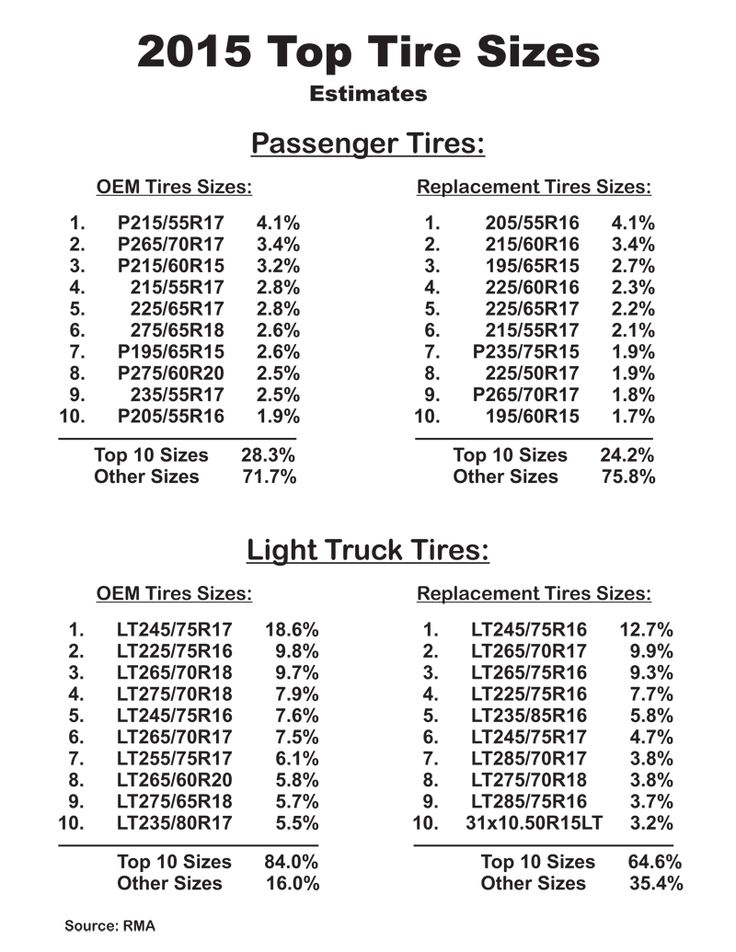 50-15 32x11.50-16 32x12.50-15 32x12.50-16.5 32x9-16 33x10.50x15 33x12.50-15 33x12.50-16.5 33x13.50-15 33x13.50-16 33x14.50-15 33x14x15 33x15.5-16.5 33x9.50-15 340/80-18 340/85-24 340/85-28 345/55-16 345/55-17 34x9.50-15 34x9x16 35.5-32 355/60-20 355/65-18 355/80-20 35x12.5-16 35x12.50-15 35x12.50-16.5 35x12.50-17 35x12.50-20 35x13.50-15 35x13.50-16 35x14-15 35x14-16 360/70-24 360/80-20 365/60-22.5 365/65-16 36x12.50-15 36x12.50-16.5 36x13x16 36x14-16.5 37x12.50-16.5 37x12.50-17 37x12.50-20 37x12.50x16 37x13.50-17 37x13.50-20 38.5x15-16.5 380/70-24 380/85-24 380/85-28 380/85-30 385/95R24 38x12.50x16.50 38x13x16 38x15.50R16.5 395/85-20 4.00x4.80x8 4.10/3.50x4 4.10/3.50x5 4.10/3.50x6 4.10x3.50x6 400/70-20 400/80-24 400/80-28 405/70-20 40x19-19.5 41x14.00-20 420/70-24 420/70-28 420/70-30 420/80-46 420/85-24 420/90-30 425/65-22.5 43/16.00x20 440/65-24 440/65-28 440/80-24 440/80-28 440/80-30 440/80-34 445/65-19.5 445/65-22.5 445/70-24 44x18.00-20 455/55R22.5 460/65-24 465/65-24 480/65-24 480/65-28 480/70-24 480/80-30 5.
50-15 32x11.50-16 32x12.50-15 32x12.50-16.5 32x9-16 33x10.50x15 33x12.50-15 33x12.50-16.5 33x13.50-15 33x13.50-16 33x14.50-15 33x14x15 33x15.5-16.5 33x9.50-15 340/80-18 340/85-24 340/85-28 345/55-16 345/55-17 34x9.50-15 34x9x16 35.5-32 355/60-20 355/65-18 355/80-20 35x12.5-16 35x12.50-15 35x12.50-16.5 35x12.50-17 35x12.50-20 35x13.50-15 35x13.50-16 35x14-15 35x14-16 360/70-24 360/80-20 365/60-22.5 365/65-16 36x12.50-15 36x12.50-16.5 36x13x16 36x14-16.5 37x12.50-16.5 37x12.50-17 37x12.50-20 37x12.50x16 37x13.50-17 37x13.50-20 38.5x15-16.5 380/70-24 380/85-24 380/85-28 380/85-30 385/95R24 38x12.50x16.50 38x13x16 38x15.50R16.5 395/85-20 4.00x4.80x8 4.10/3.50x4 4.10/3.50x5 4.10/3.50x6 4.10x3.50x6 400/70-20 400/80-24 400/80-28 405/70-20 40x19-19.5 41x14.00-20 420/70-24 420/70-28 420/70-30 420/80-46 420/85-24 420/90-30 425/65-22.5 43/16.00x20 440/65-24 440/65-28 440/80-24 440/80-28 440/80-30 440/80-34 445/65-19.5 445/65-22.5 445/70-24 44x18.00-20 455/55R22.5 460/65-24 465/65-24 480/65-24 480/65-28 480/70-24 480/80-30 5. 00/5.70x8 5.30/4.50x6 550/65-25 555/70-25 6.00-14 6.00-16 6.50-10 6.50-16 6.50-20 6.70-15 600/50-22.5 600/55-26.5 600/65-34 6x12 7-17.5 7.00-12 7.00-14 7.00-15 7.00-15TR 7.00-16 7.00-17 7.00-18 7.00-20 7.2-24 7.50-10 7.50-14 7.50-15 7.50-15TR 7.50-16 7.50-17 7.50-18 7.50-20 700/45-22.5 700/50-26.5 700/50-34 700/55-34 700/70-34 705/70-25 710/45-26.5 710/55-34 73/44.00-32 750/55-26.5 750/65-25 755/70-25 8-17.5 8-19.5 8-22.5 8.00-16.5 8.15x15 8.25-15 8.25-15TR 8.25-20 8.3-24 8.50-17.5 8.75-16.5 8x12 8x15 8x16 9-14.5MH 9-17.5 9-22.5 9.00-15 9.00-15TR 9.00-16 9.00-20 9.5-16 9.5-24 9.5-28 9.5-32 9.5-36 9.5-38 9.50-16.5 FR78-15 GR78-15 H70-14ST H78-14ST H78-15 H78-15ST L78-16 LR78-15 LR78-16 Nov-36 Nov-38 NR78-15 Oct-32 Oct-38 PR78-15 PR78-16 QR78-15 QR78-16 Skidsteer
00/5.70x8 5.30/4.50x6 550/65-25 555/70-25 6.00-14 6.00-16 6.50-10 6.50-16 6.50-20 6.70-15 600/50-22.5 600/55-26.5 600/65-34 6x12 7-17.5 7.00-12 7.00-14 7.00-15 7.00-15TR 7.00-16 7.00-17 7.00-18 7.00-20 7.2-24 7.50-10 7.50-14 7.50-15 7.50-15TR 7.50-16 7.50-17 7.50-18 7.50-20 700/45-22.5 700/50-26.5 700/50-34 700/55-34 700/70-34 705/70-25 710/45-26.5 710/55-34 73/44.00-32 750/55-26.5 750/65-25 755/70-25 8-17.5 8-19.5 8-22.5 8.00-16.5 8.15x15 8.25-15 8.25-15TR 8.25-20 8.3-24 8.50-17.5 8.75-16.5 8x12 8x15 8x16 9-14.5MH 9-17.5 9-22.5 9.00-15 9.00-15TR 9.00-16 9.00-20 9.5-16 9.5-24 9.5-28 9.5-32 9.5-36 9.5-38 9.50-16.5 FR78-15 GR78-15 H70-14ST H78-14ST H78-15 H78-15ST L78-16 LR78-15 LR78-16 Nov-36 Nov-38 NR78-15 Oct-32 Oct-38 PR78-15 PR78-16 QR78-15 QR78-16 Skidsteer Let’s face it, one of the most confusion things about buying tire chains is figuring out your tire size so you know what size chain to buy.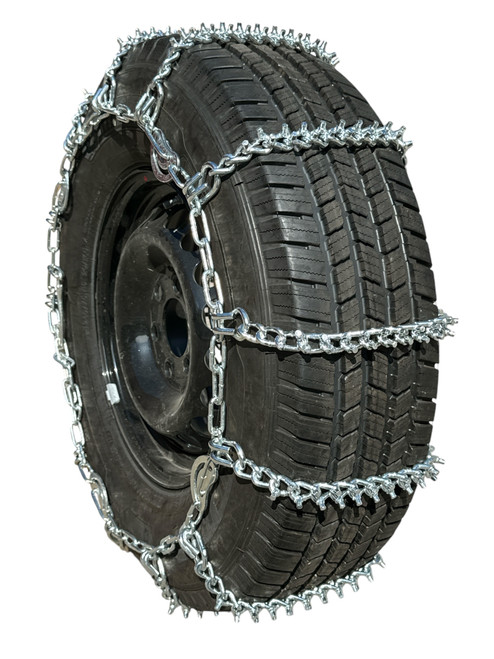
Most tires sold today are sized by the “metric” system. This sizing can be represented with no letter before the size, P-metric, LT-metric and ST-metric. Common examples of this are as follows: 235/75R15, P235/75R15, and LT235/75R15.
In these examples the first set of 3 digits is the width of the tire, measured from sidewall to sidewall, in millimeters, NOT the tread width.
The second group of digits is the “aspect ratio”. The Aspect Ratio is the height of sidewall from the wheel to the top of the tread. The height of the sidewall is a percent of the tire width ...the aspect ratio. In our example, 265/75, the sidewall height is 75% of the 265mm width, or 198mm.
The third set of digits is the rim diameter in inches.
Flotation sizing is used for some cars and truck, and used for small tires such as the ones used on trailers, tractors, and ATVs ie. .. 22x10x10, 18x9.5x8. All of the measurements are in inches. The first number is for the height. The second number is the sidewall width. The last digits are the rim diameter.
.. 22x10x10, 18x9.5x8. All of the measurements are in inches. The first number is for the height. The second number is the sidewall width. The last digits are the rim diameter.
Numeric sizing is used light truck, 205-16, commercial truck, 11-22.5, and agricultural, 9.5-24, applications. The first digits are the width, sidewall to sidewall. The second digits represent the rim size. If your tire size happens to have three sets of numbers, 31x15.50-15, the first number is the height, the second number is the width, and the third number is the rim diameter.
A sturdy set of tire chains is something every vehicle owner should consider carrying along during the winter months.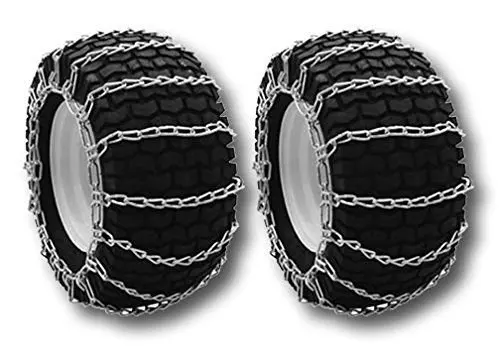 Some states require drivers to have them on hand in case weather makes roads difficult or dangerous for driving. Tire chains bite into heavy snow, slush, and ice to give your rig extra traction and help ensure safe arrival at your destination.
Some states require drivers to have them on hand in case weather makes roads difficult or dangerous for driving. Tire chains bite into heavy snow, slush, and ice to give your rig extra traction and help ensure safe arrival at your destination.
Tire chains are available for many different tire sizes and specific travel needs. Be sure to check your vehicle’s instruction manual for recommendations regarding the use of snow chains.
Know your tire size
One tire chain may fit multiple tire sizes. To figure out your tire size, locate the letter/number combination on the tire’s sidewall. The first three-digit number refers to the tire width in millimeters (measured from one sidewall to the other). The two-digit number immediately after the slash mark is the aspect ratio percentage, calculated by dividing a tire’s height off the rim by its width.
For example, a tire branded with 225/75 has a width of 225 mm, while the tire’s height is 75 percent of its width.
Consider your application
Are you part of the lumber industry or a utility company replacing downed power lines through hills and rough terrain? Or, more commonly, a trucker or highway service worker navigating hard-surface roads and steep mountain passes? Do you have all-season — year-round — radial tires, or those designed for snow/mud?
Snow tire shoulders are squarer and have a different tread than all-weather versions. Therefore, they require a longer chain to cover the added surface area. Also, how often do you plan to mount the chains — after every snowfall or only when necessary? Do you require single chains, or duals?
We offer two styles of snow chains from Pewag, a leader in chain manufacturing. Both meet or exceed DOT and National Association of Chain Manufacturers (NACM) regulations: -
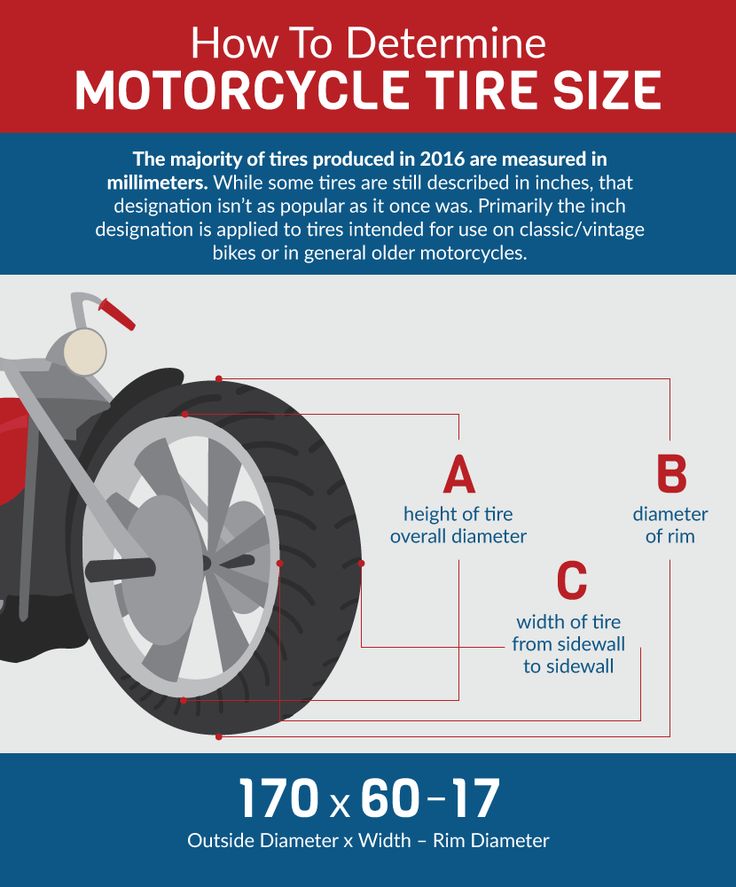 -
-Practice installing beforehand
Don’t wait till you’re in trouble and standing in freezing temperatures to try putting chains on your tires for the first time. Make yourself familiar before you need them by reading mounting instructions and attempting an installation on dry ground.
Always pre-fit tire chains before use to ensure correct fit. If possible, “chain up” prior to reaching poor driving conditions. Always pull your car off the road away from traffic, like into a garage or parking lot. Lay the chain on the ground, remove twists or kinks, and check for signs of damage.
If possible, “chain up” prior to reaching poor driving conditions. Always pull your car off the road away from traffic, like into a garage or parking lot. Lay the chain on the ground, remove twists or kinks, and check for signs of damage.
Drape the chain relatively centered over the top of your tire, straightening it out to evenly distribute over both sides of the tire. Drive forward a few feet to expose the rest of the wheel that was previously touching the ground, and secure the chain squarely on the remaining surface.
Depending on the style, tighten as instructed. After moving forward about 100 yards, stop and inspect the chains for correct tension and fit. Re-tension if necessary or if the chain starts to hit the wheel well. However, too much tension can lead to tire damage, wheels spinning, and increased chain wear.
Shop our entire selection of tire chains, or call and talk to one of our sales experts at 866-348-3473. We can find just about any size you need.
About US Cargo Control
Founded in 2005, US Cargo Control is a trusted leader in the cargo control industry, specializing in professional rigging and lifting equipment, trucking and transportation tie downs, and moving supplies.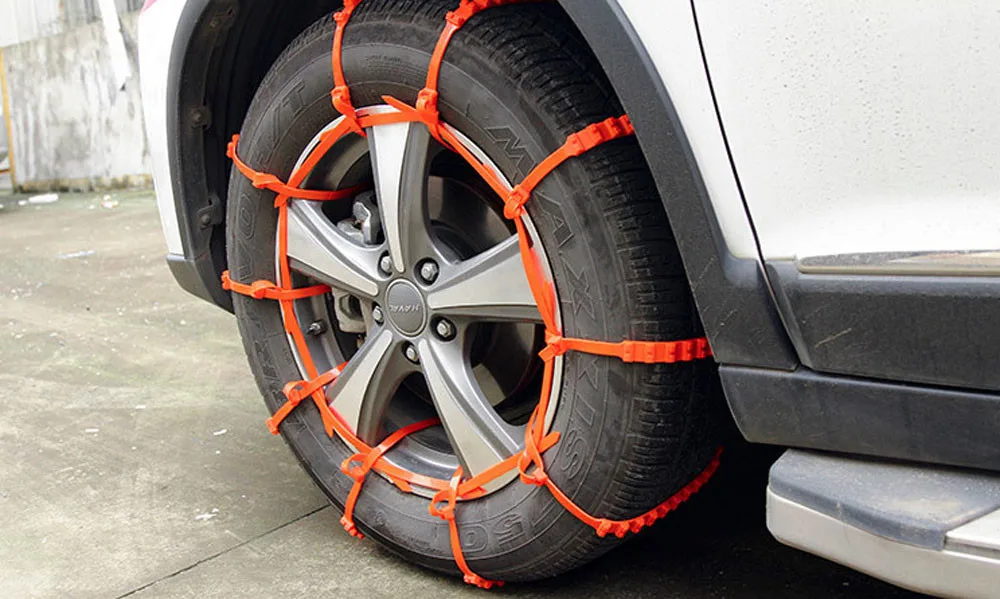 With a superior online shopping experience, industry-experts available via phone, and a central Midwest location, USCC is dedicated to getting you what you want, when you need it. For more information, visit www.uscargocontrol.com
With a superior online shopping experience, industry-experts available via phone, and a central Midwest location, USCC is dedicated to getting you what you want, when you need it. For more information, visit www.uscargocontrol.com
Anti slip chains come in a variety of designs. Differ:
- adapter chains;
- spring steel chains;
- cable chains.
Cable chains for wheels are the most widely used. Chains not only differ in their properties and quality, but also differ in the means of their installation. The most inconvenient in their installation adapter traction chains. With their installation, you will most likely have to contact the services of a car service.
There is another difference between car and SUV chains.
Ease of installation is an important item in the list of advantages of any chain. After all, often you have to do installation work right on the road. Therefore, among the variety of assortment, self-tensioning anti-slip chains from PEWAG can be distinguished.
These are warranty chains. The diamond-shaped asymmetrical pattern ensures excellent flotation even in the toughest conditions. You can install them yourself in a few minutes. The firm provides a guarantee for 5 years. Cooperating with the world's leading manufacturers, it occupies a high place in the field of innovative solutions for the development of anti-slip chains. The products manufactured by the company belong to the “premium class” and are subjected to constant testing, both in laboratory and on the road.
Automatic release system
The chain can be released by pressing a special lever located on the outside of the tire.
Self-tensioning system
The chain is automatically tensioned onto the wheel, so there is no need to stop to tension it.
All components of the system are specially made of plastic to avoid damage to the alloy wheel rims.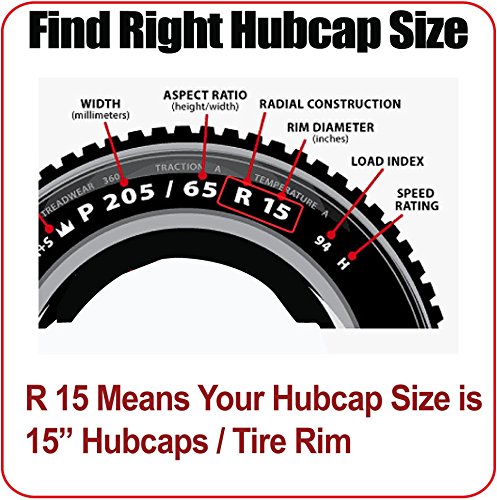
Micro Tension System
When the wheel spins, the chain is tensioned with great precision. The system is made of plastic to prevent damage to the alloy wheel rims.
Adjustment links
In order for the traction control chains to be suitable for different types of wheels with different levels of wear on their surfaces, adjusting links are installed on the side chains.
Internal flexible cable
To install the slip chain without rearranging and lifting the car, a steel cable with a plastic coating is intended.
Open Chain Interlock
Provides and facilitates the installation of a tension or micro tension system during chain assembly.
Anti-tangle turning mechanism
This mechanism prevents knots from appearing on the chain during assembly.
Using both sides of the chain
This feature extends the life of the chain itself.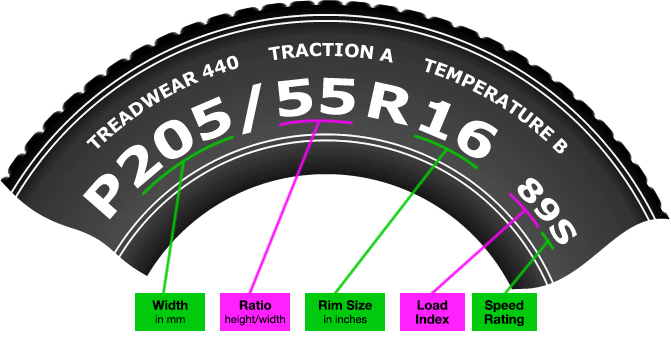
Often motorists have a question about the need to install chains at all. Some people think that they just take up extra space in the trunk. Leaving them at home, in the garage, we cannot imagine what kind of situation may lie in wait for us on the road. One reckless driver can create a huge traffic jam, especially outside the city limits, leaving everyone to thresh snow on the spot.
This is exactly what the snow and traction chain kit is designed for. One has only to use it and all the problems with moving on a slippery and snowy road will fade into the background.
Chains with steel spring shackles
On such chains, the shackles, which are pre-tensioned, are allowed to stretch. They are superimposed on the outside of the wheel.
Self tightening chains
These chains are laid open around the wheel and closed through the upper side at the rear.
Adapter chains
Quick mounting is ensured by a holder fixed to the wheel.
Auxiliary devices for increasing grip
For this, a spiked plate or chain is used, having a tension belt attached to the wheel and partially covering it.
Putting a cable chain on the wheels can be a bit of a hassle for the driver of a vehicle. If the wheel arch of a rear-wheel drive vehicle is too small for such a chain, then snow chains with steel spring links can be installed. They are imposed on the wheels from the outside without fastening behind the wheel.
The main advantage of snow chains is their low price. You can always choose chains according to the right size for the wheel on any car. The second advantage is ease of installation.
The chain is a mesh that acts as a lug that protrudes from the surface of the wheel. Such simple devices are not clogged with snow, sand or mud. The wheels, dressed in "chain mail" are able to self-clean and move confidently in any conditions.
There is only one downside to installing chains.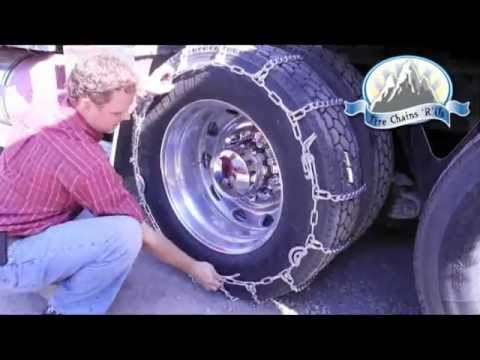 Possessing high tractive power, a car equipped with chains, in case of an unsuccessful “landing on its belly”, will scoop everything under it. In such a situation, it will be possible to pull it out only with the help of additional transport.
Possessing high tractive power, a car equipped with chains, in case of an unsuccessful “landing on its belly”, will scoop everything under it. In such a situation, it will be possible to pull it out only with the help of additional transport.
Among the various designs of chains, there are plastic, metal cable, steel from general purpose chains of different sections.
The most common are chain structures: "rhombus", "ladder", "honeycomb".
Ladder
Simple design, light, low price. It has good traction power and installation on non-steerable wheels. Suitable for short off-road driving.
Has disadvantages:
- movement is jerky, tendency to burrow due to uneven distribution over the wheel;
- sharply changing load on the wheels due to jerks, badly affects the suspension and transmission.
Honeycomb
Small pulling force, but better ability to get out of the rut. A car with such chains has a slightly softer ride, less opportunity to get bogged down in loose ground.
When choosing chains, be sure to take into account the size of the wheel arches along with the overall wheel diameter. Some imported cars, due to the small distance between the wheel and the arch, allow only chains with a small section to be installed. They protrude only 1-1.5 cm above the wheel.
When driving on a bumpy road, even imported plastic and rubber chains with a cross section of 1 cm can cling to the fender liner.
Should be classified as a separate category for synthetic chains. Such material resembles kapron. The main feature of rubber chains is a higher speed, installation on cars with small wheel arches, good grip on loose and packed snow, and soft movement. Under normal use, they can last more than one season. But their cost is quite high, from 300 to 800 dollars.
When choosing chains, first of all, you need to decide for which application you need them.
Large-link chains are recommended for loose snow and mud. Fine link chains are suitable for icy and packed snow roads. From them, the most minimal damage to the tires of the car. On loose snow, plastic and rubber chains can be ridden, but for use in mud, they will quickly break.
From them, the most minimal damage to the tires of the car. On loose snow, plastic and rubber chains can be ridden, but for use in mud, they will quickly break.
Anti-slip chains must be installed on the driving wheels of the vehicle. For an all-wheel drive car, you should buy two sets at once and install them on all four wheels.
Before installing, make sure that the chains cannot damage the suspension and the car body while driving.
On imported vehicles, damage can be caused by improperly selected chains of brake elements, sensors and fender liner. If you have only one set of chains, then install it on the front axle.
If your vehicle has a second axle with automatic connection, it is recommended to install chains on wheels with a constant torque supply.
It is advisable to put the chains on the car before directly overcoming obstacles, and then immediately remove them.
By following proper chain maintenance practices, you can protect your tires and suspension from injury and wear. When riding with chains, follow the recommendations given by the manufacturer of this product.
When riding with chains, follow the recommendations given by the manufacturer of this product.
In certain road conditions, the car's own potential is not enough. A snowy section of the road, a steep climb covered with a crust of ice, a muddy area - in all these situations, installed chains on the wheels can help out. Such "accessories" for wheels endow the vehicle with off-road properties. The main task of automobile snow chains is to improve the adhesion of wheels to the road surface.
The purpose of the chains is to significantly increase the grip properties of the wheels (and, accordingly, the vehicle's cross-country ability) on ice, loose snow, deep mud, etc. In practice, it may look like this. You go fishing - you drive 100 km along the asphalt surface on ordinary tires, and then turn into a country road, where the very “hard off-road” begins. Then wheel chains are put on - and you can go further, having much less chance of stalling or getting stuck in the mud. And places such as, for example, icy steep climbs, without wheel chains, are super problematic to overcome even on studded tires.
And places such as, for example, icy steep climbs, without wheel chains, are super problematic to overcome even on studded tires.
The device of wheel snow chains is conditionally divided into soft and hard. Both the first and the second are two longitudinal chains or cables that are stretched around the entire circumference of the wheel. Peppered and rubber (plastic) lugs are stretched between them.
The crossbars can be arranged in the form of diamonds or honeycombs, as well as a ladder. Each of the proposed options has in its arsenal certain positive advantages and disadvantages. Ladder has improved rowing ability. That is why this device is best used to overcome various kinds of areas with high pollution. However, a wheel that is fitted with this kind of snow chain also has certain disadvantages, as it is prone to burrowing.
Snow chains with a honeycomb pattern are more versatile. There are other dangers that can negatively affect a motorist's vehicle in a certain way.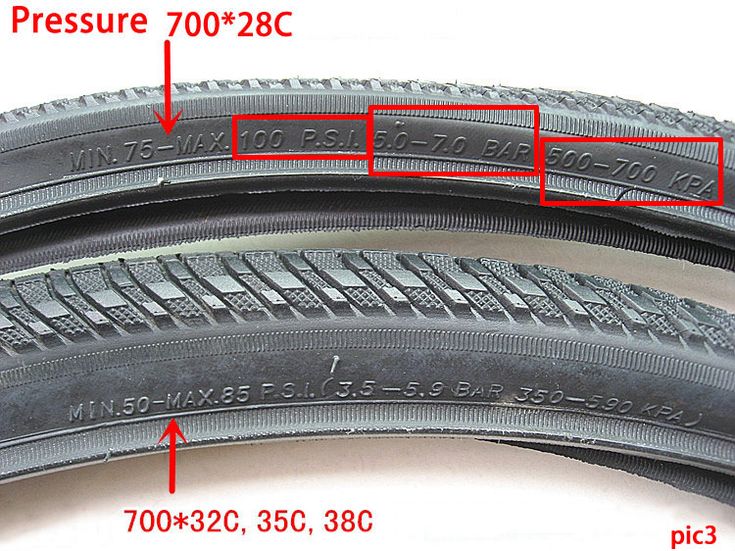 First, there are conditions for increased tire wear. In addition, when driving on such wheels, the lateral stability of the vehicle will be very low. And in conclusion, in the most negative way, these devices affect the steering and gearbox. This is due to the fact that the use of snow chains involves huge loads on these systems.
First, there are conditions for increased tire wear. In addition, when driving on such wheels, the lateral stability of the vehicle will be very low. And in conclusion, in the most negative way, these devices affect the steering and gearbox. This is due to the fact that the use of snow chains involves huge loads on these systems. Snow chains with a honeycomb pattern are more versatile and have an order of magnitude less negative impact. In addition, the components of the car will not succumb to such high loads, and the tires will last much longer. Unlike ladders of this kind, bracelets are able to provide excellent lateral stability of the vehicle, since there is constant contact with the surface during movement. The machine becomes like a tractor, its permissible speed of movement decreases. In addition, the vehicle acquires a noticeable oversteer. Therefore, before going off-road, it is recommended to adapt to new sensations in normal conditions.
The use of chains affects tire wearThe following factors can also be attributed to the disadvantages of chains:
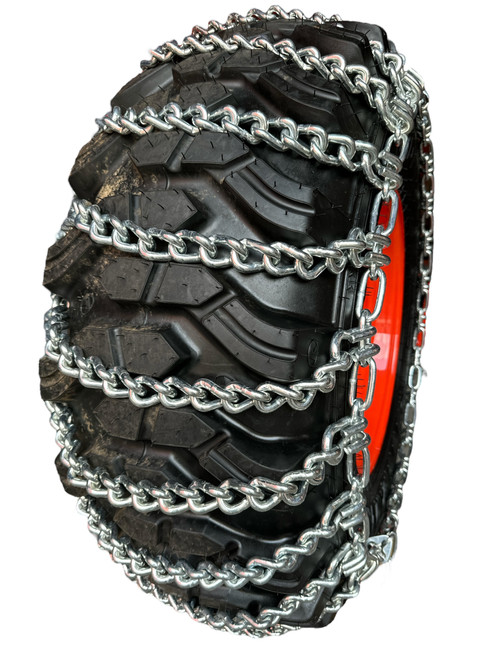
If you choose between types of snow chains, it is still worth stopping at rubber options. Road performance will be worse, but the impact on tires and other elements will not be so detrimental. And the speed of movement remains comfortable.
It is not always possible to purchase an anti-skid device - the high price and lack of availability of the right size makes car owners decide such issues on their own. I must say that this is a pretty good choice - all the necessary components are always available in hardware stores. In a critical situation, you can try to simply wrap the tire with a cable or a piece of metal rigging, but not everyone carries such a set with them. Moreover, for a disc-type brake system, this option is absolutely contraindicated - such a design will disrupt the operation of the mechanisms.
Therefore, it is worth preparing home-made chains for wheels in advance, for which you will need:
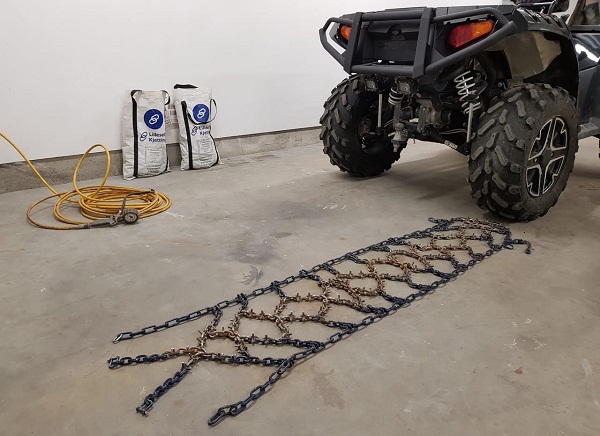
The dimensions of the workpieces depend on the dimensions of the tire used, so it is important to measure the desired values in advance. The number of transverse parts is also individual - craftsmen recommend making sure that there are two "crossbars" at once in the plane of contact between the tire and the ground.
Thanks to this scheme, the traction characteristics and reliability of the entire product will increase. The process of preparatory actions and assembly of chains on wheels with your own hands consist of the following points:
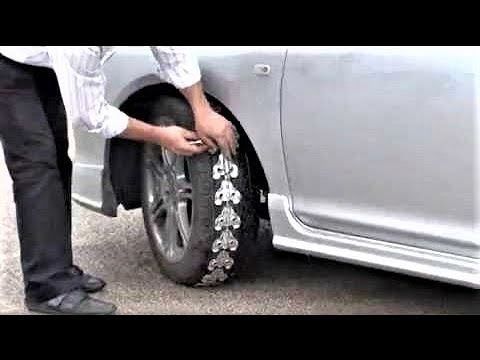
As you can see from the description, with some skill and tools, the operation will take no more than 40 minutes. Those who have welding experience can put it into practice and refuse threaded connections, which will certainly affect the quality of the equipment.
There are two ways to put the chains on the wheel:
If the car is four-wheel drive, then the chains are installed on all wheels. In other cases, it is enough to put them on only the presenters.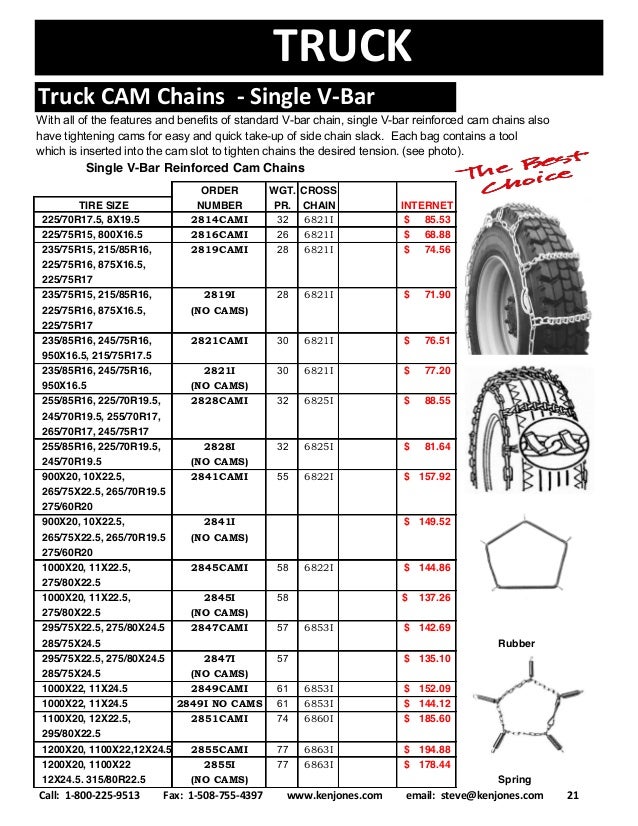
Snow chains help you in extreme conditions. But if the vehicle is operated within the city, it is enough to install special studded tires.
Refrain from exceeding the maximum speed (indicated by the manufacturer), sudden braking, sharp maneuvers. Move off and pick up speed smoothly. Otherwise, the chain will quickly fail.
Chains are mounted on tires with normal pressure levels. Do not reduce the pressure in the wheels while installing the chains - this will increase the risk of breakage.
If the chain is damaged, stop immediately and remove it. Otherwise, such a chain can cause serious damage to the wheel, parts of the brake system or suspension.
Before each installation, carefully inspect the chain - locks and links must be in good condition.
For the first time chains on wheels in our usual form appeared during the First World War. It was then that, in order to increase the cross-country ability, chains began to be put on the wheels of ordinary trucks, which significantly expanded the possibilities of their operation of cars in the most difficult road conditions.